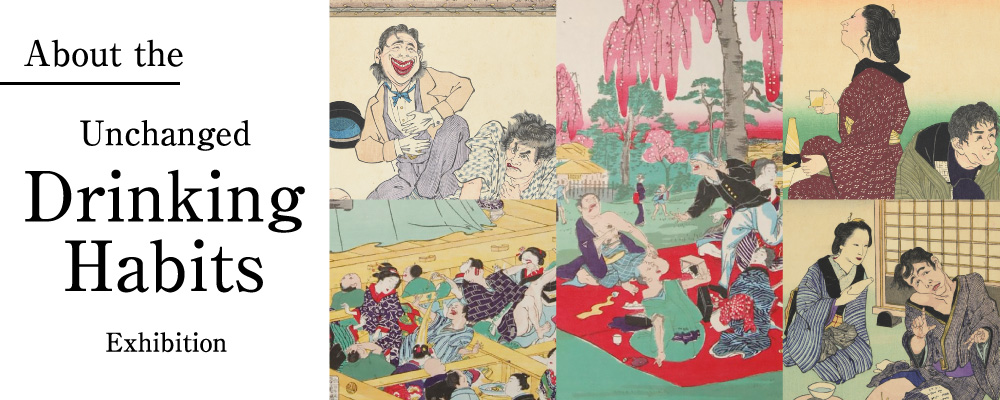Previous Article
Illustration of the Commanders who Pacified Western Japan, Receiving the Emperor's Gift Cups

From the Edo period to the early Meiji era, izakaya and restaurants were the most common places where people consumed sake. In an izakaya, sake was warmed and served in ‘chirori’ (a metal container for heating sake). At formal banquets and such, it was transferred into ‘choshi’ (a metal container shaped like a kettle) for serving instead. However, according to the Morisada Manko (an encyclopedia about the Edo period), the main vessel to serve sake in the late Edo period was the ‘kandokuri’ (a bottle used to warm sake). The records of lower-ranking samurai at the end of the Tokugawa shogunate also include drinking sake at home, but this practice most likely became common only from the mid-Meiji era.
As for Japanese drinking habits, the missionary Rodriguez, who visited Japan near the end of the Sengoku period (late 1500s), recorded in his book “History of the Japanese Church” that Japanese banquets were organized to encourage heavy drinking, and many were left intoxicated and unconscious after the events. Similar to the Ukiyo-e featured here, there were numerous examples of drunken behavior and misdemeanors being featured for comic relief during the Edo period. In addition, it could be said that the Japanese were tolerant of heavy drinking and drunkenness, as drinking games were often held to see who could drink the most. In the Meiji era, satirical newspaper articles about the blunders caused by excessive drinking emerged, reflecting the change in the public opinion of drinking.
Yuki Hata (Niigata University Japanese Sake Centre, Specially-Appointed Associate Professor)